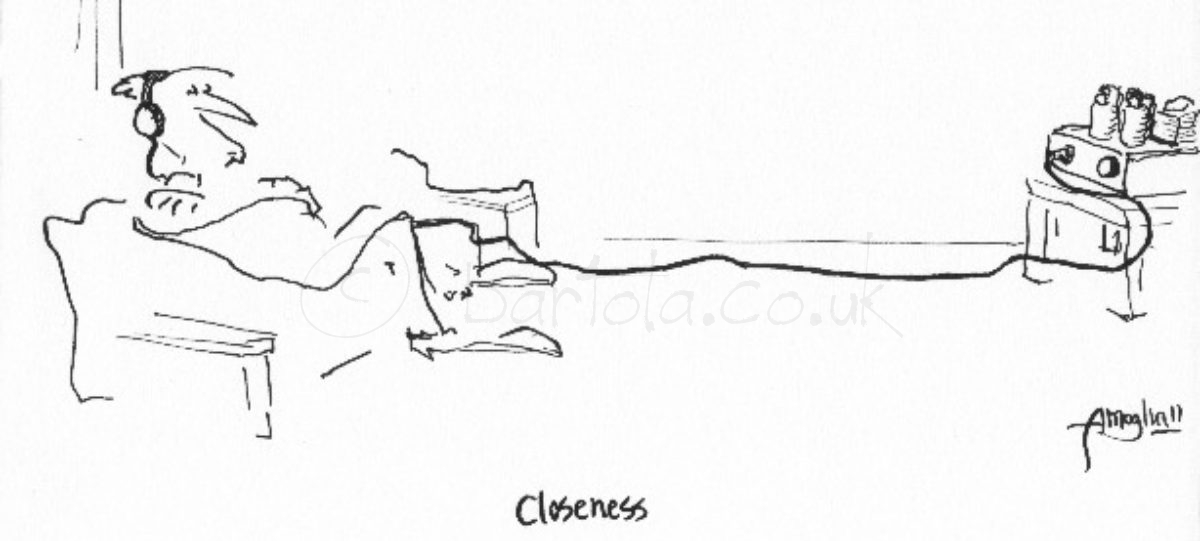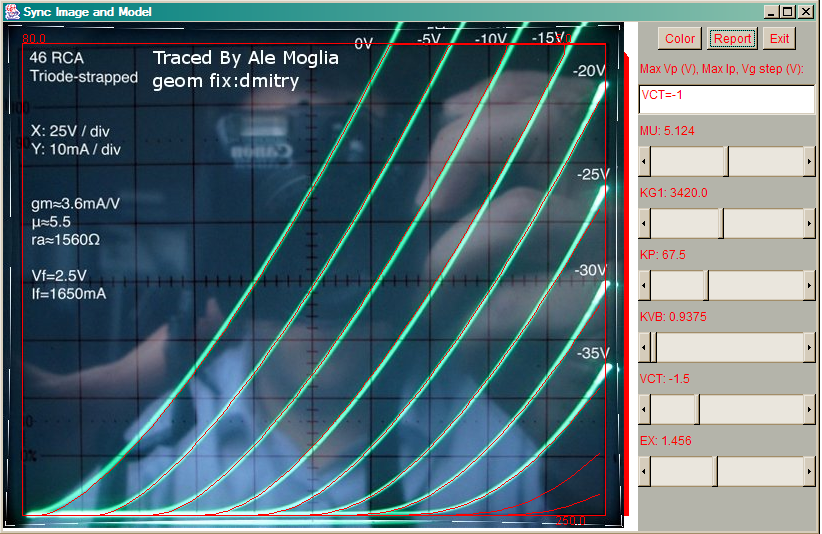
Just a dream. I will get to build that nice OTL headphone amp. Can’t complain though, I enjoy so much listening to my 45 SE with headphones….
6e5p OTL headphone amplifier with no output cap
Tracer nearly finished
A beautiful thoriated-tungsten glow
4-65a triode curves
Tracing curves of a power transmitting DHT
 Finding triode curves for the 4-65a valve has been a challenging task. There are some available from a Spice simulation which I couldn’t get hold of the model, so when I finished the curve tracer, it was the right time to take on this challenge. My curve tracer is not capable of handling this valve as I don’t have the appropriate socket and also the anode and grid drivers are limited to:
Finding triode curves for the 4-65a valve has been a challenging task. There are some available from a Spice simulation which I couldn’t get hold of the model, so when I finished the curve tracer, it was the right time to take on this challenge. My curve tracer is not capable of handling this valve as I don’t have the appropriate socket and also the anode and grid drivers are limited to:
- Anode voltage sweep range: 0-330V
- Anode maximum current: 100mA
- Grid voltage sweep range: -80V – +15V
With this constraining factors in mind, I decided to build a test jig for the 4-65a. The jig had only a grid stopper resistor (10kΩ), a screen stopper (100Ω) and ferrite beads in the anode and grid as well. When traced first set of curves got very disappointed with a double tracing for each anode curve which made me suspect that the valve was oscillating somehow due to long cables,etc. Its transconductance is below 3 mA/V, so shouldn’t be that problematic. I remember tracing 6e5p,6C45 and E180F being a real challenge for the tester due to its high transconductance.
Here is a sample of the double tracing from the first test:
 I tried many things with cables, stoppers and ferrite beads with no success. Suddenly the penny dropped and looked at the old DC raw supply I was using. I had only one capable of providing 6.3V @ 3.5A. And it’s regulation was appalling. The ripple was clearly a potential candidate for this image distortion. If ripple was high enough, it will modulate the cathode and therefore Vgk. Ripple frequency is same as refresh frequency of the curves (i.e. 100Hz).
I tried many things with cables, stoppers and ferrite beads with no success. Suddenly the penny dropped and looked at the old DC raw supply I was using. I had only one capable of providing 6.3V @ 3.5A. And it’s regulation was appalling. The ripple was clearly a potential candidate for this image distortion. If ripple was high enough, it will modulate the cathode and therefore Vgk. Ripple frequency is same as refresh frequency of the curves (i.e. 100Hz).

My test jig was modified to include a hum cancellling pot. as shown in the following diagram. I added a 100Ω and a 22mF electrolytic.
Tracing curves again then was a success. I had to trim the pot to cancel the hum and alas, the curves were very neat.
The addition of the grid stopper limited the grid current closer to 0V or above. Therefore the 0V curve gets packed closer to the following one (i.e. -5V). This can be clearly seen when the Spice model is generated

My tracer has not been designed to trace positive grid curves, so the current capability of the grid driver at positive grid voltages is limited. I need to modify the circuit, but it will have to wait as I have already spent too much time in this tracer so far!
After playing a while with Dmitry’s tool, I came up with a very reasonable model for the 4-65a. I’m sure it can be optimised, but for a couple of hours work, I’m very happy with the results…
You better driver yourself
Time ago I asked Rod Coleman about the driving requirements of my 01a preamp whilst investigating the addition of a source follower stage to the preamp. Let’s have a look at a DHT stage loaded with a gyrator (or could well be a choke or whatever you like) driving a power amplifier.
 Have you asked yourself whether your pre-amp is capable of driving your amp? How much burden does the cable parasitic capacitance add to the mix?
Have you asked yourself whether your pre-amp is capable of driving your amp? How much burden does the cable parasitic capacitance add to the mix?
As an example we will use my current setup. A 45 SE amplifier with a 6j5 driver stage. We can approximate input impedance formed by:
![]()
Where Ci is the amplifier’s input capacitance formed by the Miller effect of the valve’s input capacitance (Cag) and the additional parasitic capacitance of socket, wires and so forth. In this practical example where the input valve is an 6J5GT:
![]()
Improved 46 triode-strapped DHT composite model
My initial attempt to get a reasonable SPICE model for a 46 triode-connected DHT has proven to be ok considering it was my first try. I got better accuracy with my second attempt using CX-301a. With time, I should learn the skills of Dmitry Nizh to master the great tool he has developed. For the ones who haven’t seen his website and great material Dmitry has produced around DHT, SPICE and other good stuff, I recommend you to read his article about composite models for DHT here.
Dmitry kindly produced a very accurate model for the 46 (and also shown clearly that I’m a still a rookie at this things ):
And here is the equivalent Spice model:
Using a simple circuit in LTspice we can test the model and trace the anode characteristic curves:
And the curves can be easily generated:
Note that grid voltage starts at 0V in -10V steps.
Improving the 01a DHT preamplifier stage
|
After playing with DHT preamps (26, 71a, 4P1L, 46), I ended up staying with a CX301a version of it. I liked its warm sound and tone so I decided to stay with it. It’s been over 2 months so far that I haven’t returned to my precious 26 preamp (I will probably revisit my 26 preamp based on latest updates from Andy Evans).As I’m working on a version of the 4-65a SE amp by Michael Koster, I started investigating options and ways of improving the 01a as will be the first valve of my amplifier.
Using curves plot with my curve tracer and Dmitry’s composite model, I got a very well matched spice model for the 01a. I modelled in LTSpice two versions of the gyrator loaded preamp with filament bias and Rod Coleman’s superb filament regulator: 1) Version 1: Using Anatoly’s PNP-FET Gyrator 2) Version 2: using classic cascoded-FET gyrator with mu-follower output. Interesting results came out of this first simulation test. I think I haven’t managed to optimise (again) Anatoly’s gyrator despite have managed to keep good VDS (38V) to keep the CoSS low. I get slightly worse THD (0.03% versus 0.016%) compared to the MOSFET version. Looking at output impedance, version 1 has 10K @1kHz whereas the version 2 can get as low as 734 ohms but impedance raises significantly at low frequencies (70k version 1 versus 80k version 2). This can be reflected in the frequency response where version 1 performs better than version 2. Output impedance (Version 1) Output impedance (Version 2) At high frequency both preamps perform very well up to 1MHz despite version 2 performing slightly better. Frequency response (version 1)
Frequency response (version 2)
|

















